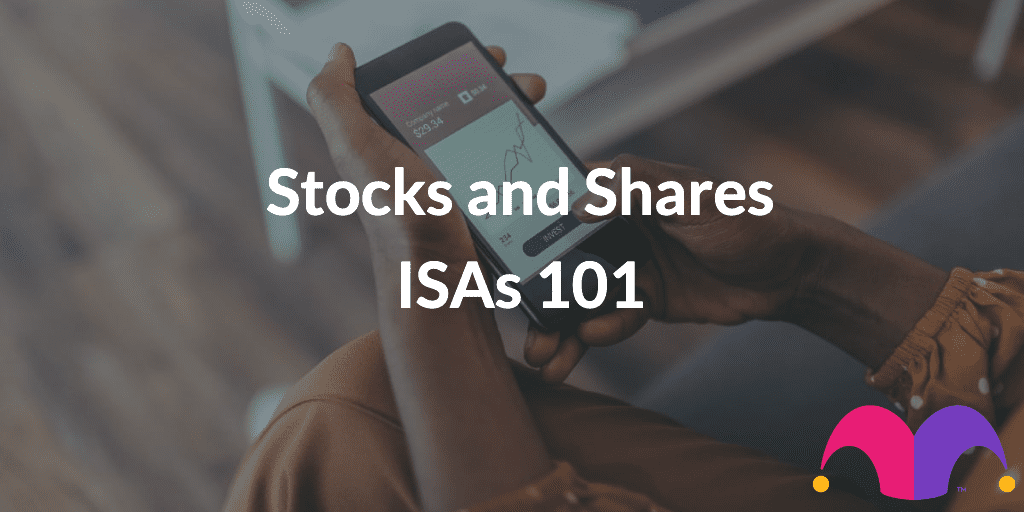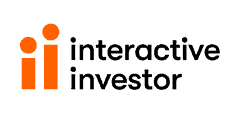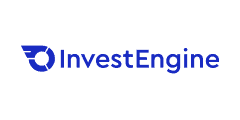- What is a stocks and shares ISA?
- Tax efficiencies of a stocks and shares ISA
- What investments can be held in stocks and shares ISAs?
- What is the stocks and shares ISA allowance?
- Stocks and shares ISA fees
- Platform fee
- Annual management fee
- Dealing charges
- Transfer fee
- Account closure fee
- How risky are stocks and shares ISAs?
- How to open a stocks and shares ISA
- 1. Choose an investment platform.
- 2. Choose what investments to hold.
- 3. Fund your account.
If you are wondering what a stocks and shares ISA is and how it works, here is everything you need to know.
What is a stocks and shares ISA?
A stocks and shares ISA is basically a tax wrapper that can be put around a wide range of investments. Any capital gains, dividends or interest received from investments in a stocks and shares ISA is tax-free.
With a stocks and shares ISA, you can buy and build a portfolio of different investments including shares, corporate and government bonds, exchange-traded funds (ETFs), investment trusts and many others.
As you’d expect for a financial product, there are some conditions to be eligible for an ISA. Notably, you must be a UK resident (for tax purposes) and be aged at least 18.
Tax efficiencies of a stocks and shares ISA
The main benefit of a stocks and shares ISA is that it comes with tax efficiency. Investments held within a stocks and shares ISA are exempt from capital gains tax, dividend tax, and income tax. This could mean a significant amount of tax savings during a lifetime.
For example, imagine if you bought shares in a company for £5,000 and sold them later for £20,000. Normally, there would be £3,000 of capital gains subject to tax (after the £12,000 annual allowance is deducted). But if those shares were held in a stocks and shares ISA, you wouldn’t be subject to that tax.
Turning to dividends, the annual allowance for dividends received outside of a stocks and shares ISA is £2,000. Someone who has an annual dividend income of £20,000 would be taxed at 7.5% or 32.5%, again depending on whether they are a basic-rate or higher-rate taxpayer. But, once again, an investor using a stocks and shares ISA would be saved this hefty tax bill.
These tax savings are indeed a key reason why many investors open a stocks and shares ISA instead of (or in addition to!) a regular online share-dealing account.
RELATED: What Is Capital Gains Tax in the UK?
What investments can be held in stocks and shares ISAs?
Stocks and shares ISAs can hold a wide variety of different investments. There are four main types:
- Shares in individual companies
- Unit trusts, exchange traded funds (ETFs), and investment companies are all pooled investment vehicles
- Corporate bonds
- Government bonds
What is the stocks and shares ISA allowance?
Since there are tax advantages involved, it’s probably not too surprising to hear that there are limits to how much you can invest in a stocks and shares ISA. The maximum amount that can be invested in one of these accounts each tax year is £20,000.
It’s also important to note that this annual ISA allowance is a cumulative figure across all types of ISAs. So if you go ahead and invest the full £20,000 in a stocks and shares ISA, you wouldn’t be able to invest in a cash ISA, innovative ISA or other types of ISA.
Likewise, it is not possible to repay amounts that are withdrawn from a stocks and shares ISA, unless the payments form part of the annual allowance. Which means that if you pull £1,000 from your account, you can still only put £20,000 into it during the tax year (not £21,000).
Stocks and shares ISA fees
The fees on a stocks and shares ISA will vary according to your chosen provider. Different providers have not only different types of fees but also have different fee structures.
Further, the total fees you pay may depend on different factors, such as:
- The total amount of money invested
- Frequency of trading (i.e. buying and selling of investments)
Here are the most common fees to expect when investing in a stocks and shares ISA.
Platform fee
This is basically the admin fee that you will have to pay your ISA provider to cover the running costs of your ISA. Usually, it will be an annual fee calculated as a percentage of your total ISA holdings. That means that the larger your investments, the higher the platform fee.
Some platforms, however, use a tiered basis to calculate your platform fee whereby you pay a lower fee for bigger investments.
Other providers may also charge you a flat fee. This is where you pay a set sum every month or year (regardless of the amount invested to cover the cost of running your ISA). A flat-fee structure could turn out to be cheaper for people with relatively large ISA holdings.
Annual management fee
This is the fee that your provider will charge you to manage your portfolio. Essentially, it is the ongoing cost of looking after and fine-tuning your investments on your behalf to ensure they remain on track. The fee can vary significantly between different providers.
Of course, if you choose a DIY approach – that is, if you select and manage your own investments – you won’t have to pay this fee.
Dealing charges
This is a charge that is levied by your provider whenever you trade a stock. If you are a buy-and-hold investor, this charge likely won’t matter much. However, if you are a frequent trader, finding a platform with low dealing fees should be a top priority. Most platforms will charge you a fixed fee per trade based on the number of monthly trades you execute.
Some providers, however, don’t levy a dealing fee and may instead factor the costs into other charges such as the platform fee.
Transfer fee
An ISA transfer fee is the fee associated with transferring your stocks and shares ISA from one provider to another. It is also known as exit fees.
The costs vary from provider to provider, with some companies not levying any charge when you decide to move on from them.
Account closure fee
You may have to pay a fee to close your account completely with a provider. Once again, whether you will have to pay this fee, as well as the amount, will vary between providers.
As the fees and costs of opening and managing an ISA can vary significantly between different providers, it is worth shopping around to find the best deal.
Overall, though, the cost of having a stocks and shares ISA versus a share-dealing account is often fairly insignificant when the tax benefits of the former are factored in.
If you are thinking of investing in the stock market or in another mainstream asset such as bonds, a stocks and shares ISA is definitely worth keeping in mind.
How risky are stocks and shares ISAs?
Assets that you hold within an ISA, e.g. shares, can go up and down – putting your capital at risk. As a result, a stocks and shares ISA is generally viewed as a riskier proposition than other types of ISAs, like a cash ISA.
However, in the long run, investments such as FTSE 100 shares have historically risen. In fact, the FTSE 100 index has posted annualised total returns (that is, capital growth plus dividends received) in the high-single digits over the long run.
As such, investing in a range of shares has the potential to grow your savings while capitalising on the tax efficiency of a stocks and shares ISA.
It’s also worth noting that if your Stocks and Shares ISA or SIPP provider goes under, your money is protected by the Financial Services Compensation Scheme (FSCS) if the provider is regulated by the Financial Conduct Authority (FCA).
How to open a stocks and shares ISA
Here are three steps to opening a stocks and shares ISA.
1. Choose an investment platform.
Stocks and shares ISAs are available from a wide range of providers, including banks and building societies, stockbrokers, and fund management companies. You can also open an ISA via a brokerage account.
The easiest and often the cheapest way to open a stocks and shares ISA, however, is through online investment platforms. There are many online investment platforms in the UK, each with advantages and disadvantages.
2. Choose what investments to hold.
Once you’ve picked a platform, the next step is to decide what types of investments to hold.
If you don’t want the hassle of picking investments yourself, you can actually open a stocks and shares ISA with a ready-made portfolio. Here, an investment manager or ‘robo-advisor’ picks and manages investments for you based on your investment goals and risk-profile.
It’s worth noting that you can only pay into one stocks and shares ISA each year. However, you can open a new ISA with a different provider each year if you like.
3. Fund your account.
Once you open a stocks and shares ISA, you can choose to make a lump-sum investment into the account or you can make periodic contributions throughout the year.
To find the right ISA platform for you, check out our featured stocks and shares ISAs and get started today!
Good for long-term, cost-conscious investors who want lots of flexibility
Interactive Investor Stocks and Shares ISA *
| Trading Commission | From £3.99‡ |
| Account Management Fee | From £4.99† |
- Pros & Cons
- Fees & Charges
Pros
- Very cheap trading costs
- Flat-rate platform fee structure
- Inclusive free trades with some plans
Cons
- No dealing fee discount for frequent trading
- Some plans can be expensive for smaller portfolios
- Limited trading tools
Interactive Investor offers three different subscription plans – these are easy to switch between at a later date, should circumstances change.
Investor Essentials plan
Platform Fees:†
Monthly subscription fee: £4.99
Equities custody charge: covered by subscription fee
Fund management charge: covered by subscription fee
Note: the ‘Investor Essentials’ plan has a £50,000 investment limit; if this is exceeded the account will automatically be upgraded to the ‘Investor’ plan.
Dealing Fees‡:
UK shares & ETFs: £3.99
US shares: £3.99
Other international shares: £9.99
UK fund trades: £3.99
Investor plan
Platform Fees:†
Monthly subscription fee: £11.99
Equities custody charge: covered by subscription fee
Fund management charge: covered by subscription fee
Dealing Fees‡:
A monthly dealing credit, worth £3.99, is included as part of the account subscription and is valid for 31 days. (Equivalent to 1 free trade per month).
Additional trades are charged as follows:
UK shares & ETFs: £3.99
US shares: £3.99
Other international shares: £9.99
UK fund trades: £3.99
Super Investor plan
Platform Fees:†
Monthly subscription fee: £19.99
Equities custody charge: covered by subscription fee
Fund management charge: covered by subscription fee
Dealing Fees‡:
A monthly dealing credit, worth £7.98, is included as part of the account subscription and is valid for 31 days. (Equivalent to 2 free trades per month).
Additional trades are charged as follows:
UK shares & ETFs: £3.99
US shares: £3.99
Other international shares: £5.99
Fund trades: £3.99
Applicable to all plans
Regular investing service: free to use (£25 minimum investment amount, no dealing fees)
Spot + FX fees: 1.5%
Telephone dealing charge: £49
Note: For UK and US trades over £100,000, and other International share trades over £25,000 additional fees and charges apply. (See the Interactive Investor website for full details.)
Great for investors who want a simple and affordable experience
InvestEngine Stocks and Shares ISA *
| Account Management Fee |
|
- Pros & Cons
- Fees & Charges
- Sign-up Offer
Pros
- Extremely cheap platform
- Choice of managed portfolio or DIY
- Huge selection of ETFs
Cons
- £100 minimum investment to create portfolio
- No trading tools
- No ethical ready-made portfolios
Annual Platform Fee:
- 0.25% for the managed portfolio service.
- No fee for the DIY service
Average Fund Costs: 0.23%
IMPORTANT NOTE: if you click on the links below to read the offer terms and conditions, make sure you return to this page and click on the Apply Now button to ensure the sign-up offers listed below get applied to your InvestEngine application.
SIGN-UP OFFER: open an InvestEngine account through The Motley Fool UK and you’ll get an investment bonus of between £10 & £50 when you sign up and deposit £100 (T&Cs apply)
- This offer is for new InvestEngine customers, and only applies to one Portfolio per customer.
- View the full terms and conditions for this offer.
ISA BONUS OFFER: top-up or transfer to InvestEngine by 6pm on 31/05/24 and receive a bonus of up to £2,500 (capital at risk, T&Cs apply)
Frequently Asked Questions
-
Yes, stocks and shares ISA dividends stay within your ISA unless you choose to withdraw them. Many brokers offer schemes that allow you to reinvest your dividends automatically at a low cost or you can decide yourself exactly where you want to reinvest your money.
-
Stocks and shares ISAs protect your investments from both income and capital gains tax and this can be a very valuable benefit, especially if you expect to invest on a regular basis for a number of years. There is sometimes an additional charge for having an ISA compared to a non-taxable account but this varies between providers and some make no extra charge.
-
Most brokers will check how much you have put into your ISA each year to make sure that you don’t breach the £20,000 limit. But if you have ISA accounts with multiple providers, it’s possible to breach the limit by accident. If this happens, HMRC will reclaim the money from the account that went over the £20,000 limit and repair the ISA. You may need to pay some tax as a result of this process. If you spot that you have made a mistake with your ISA in this way then you can contact HMRC and your ISA providers to inform them so that they can begin the repair process.
-
This will depend entirely on what you put into your stocks and shares ISA. Investing in funds or trackers will usually provide lower but more consistent returns than investing in individual shares.


